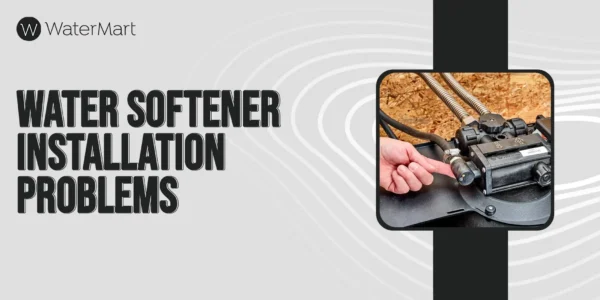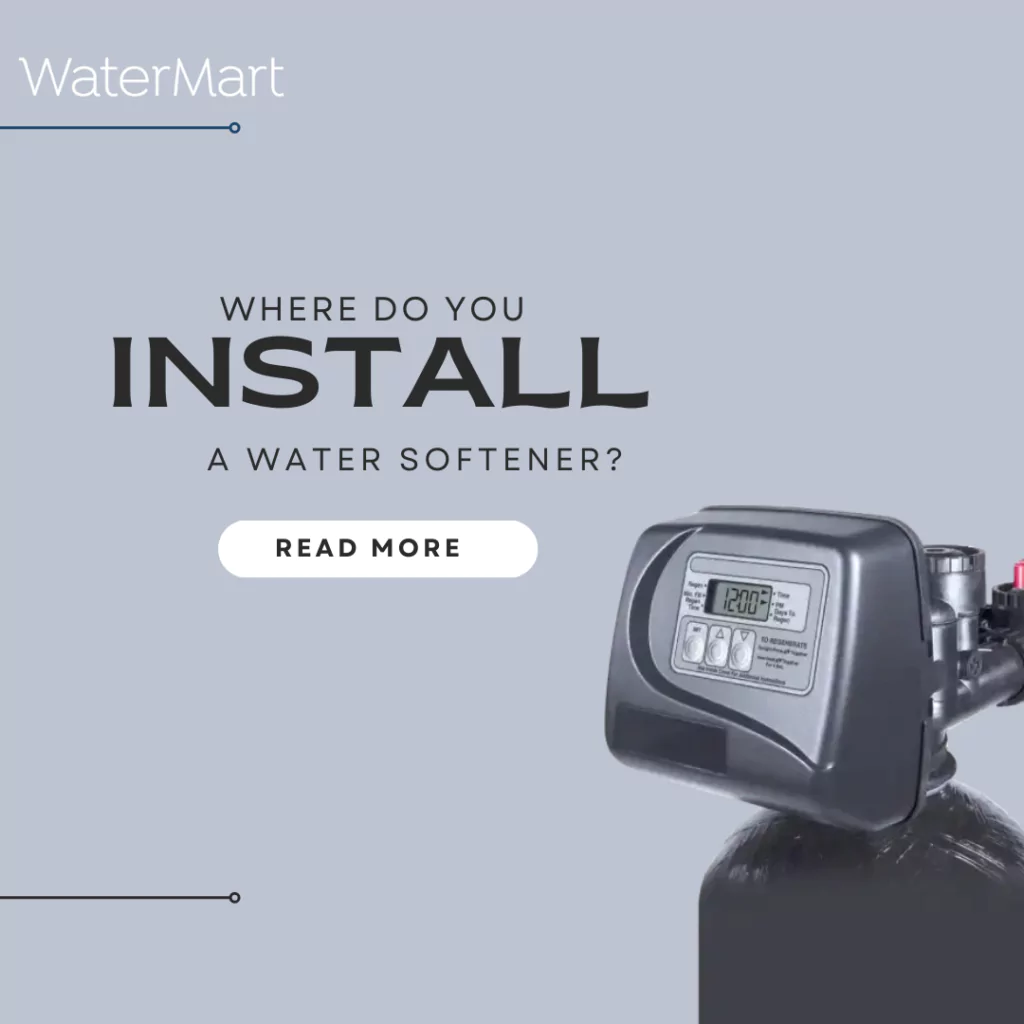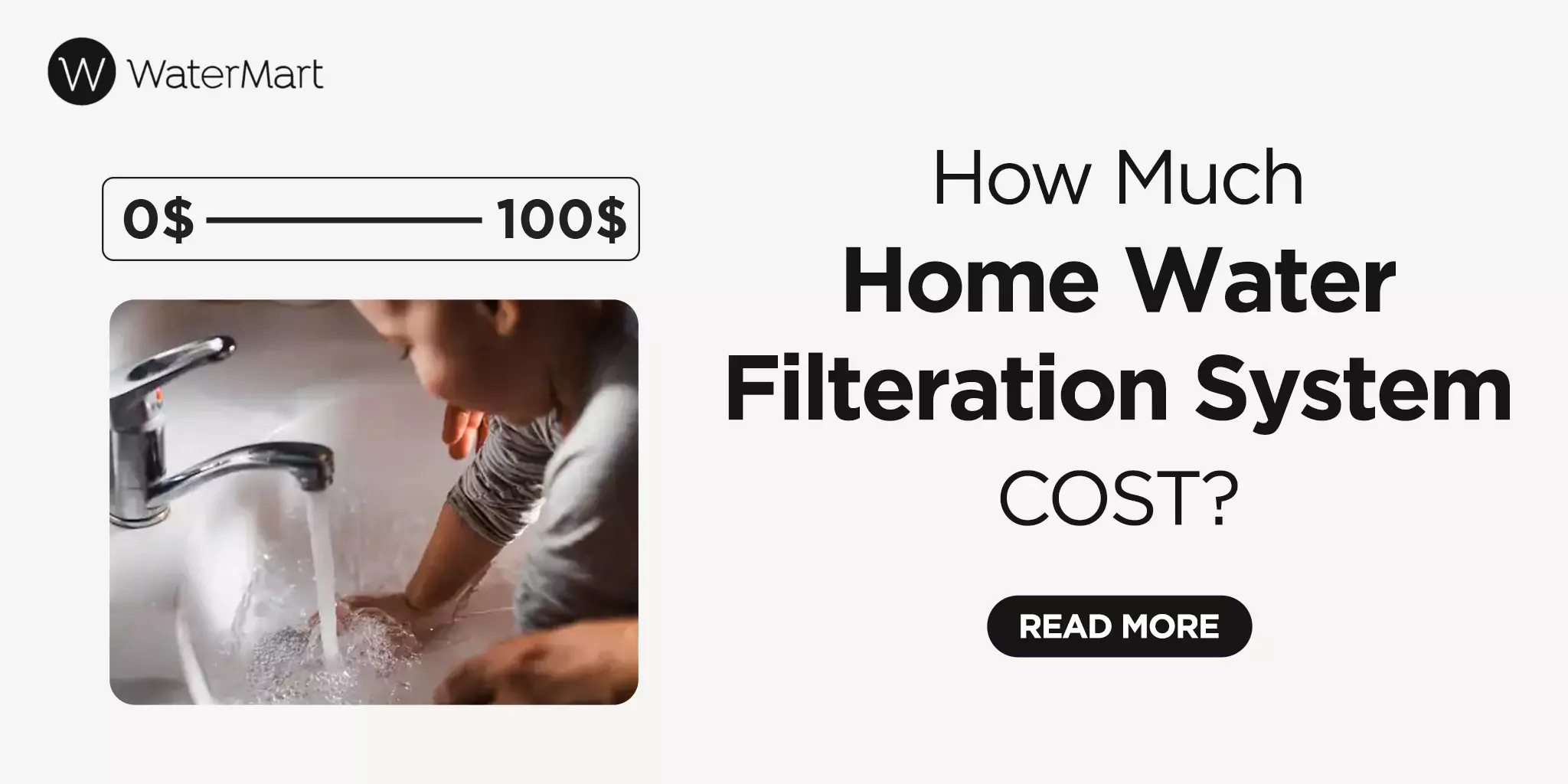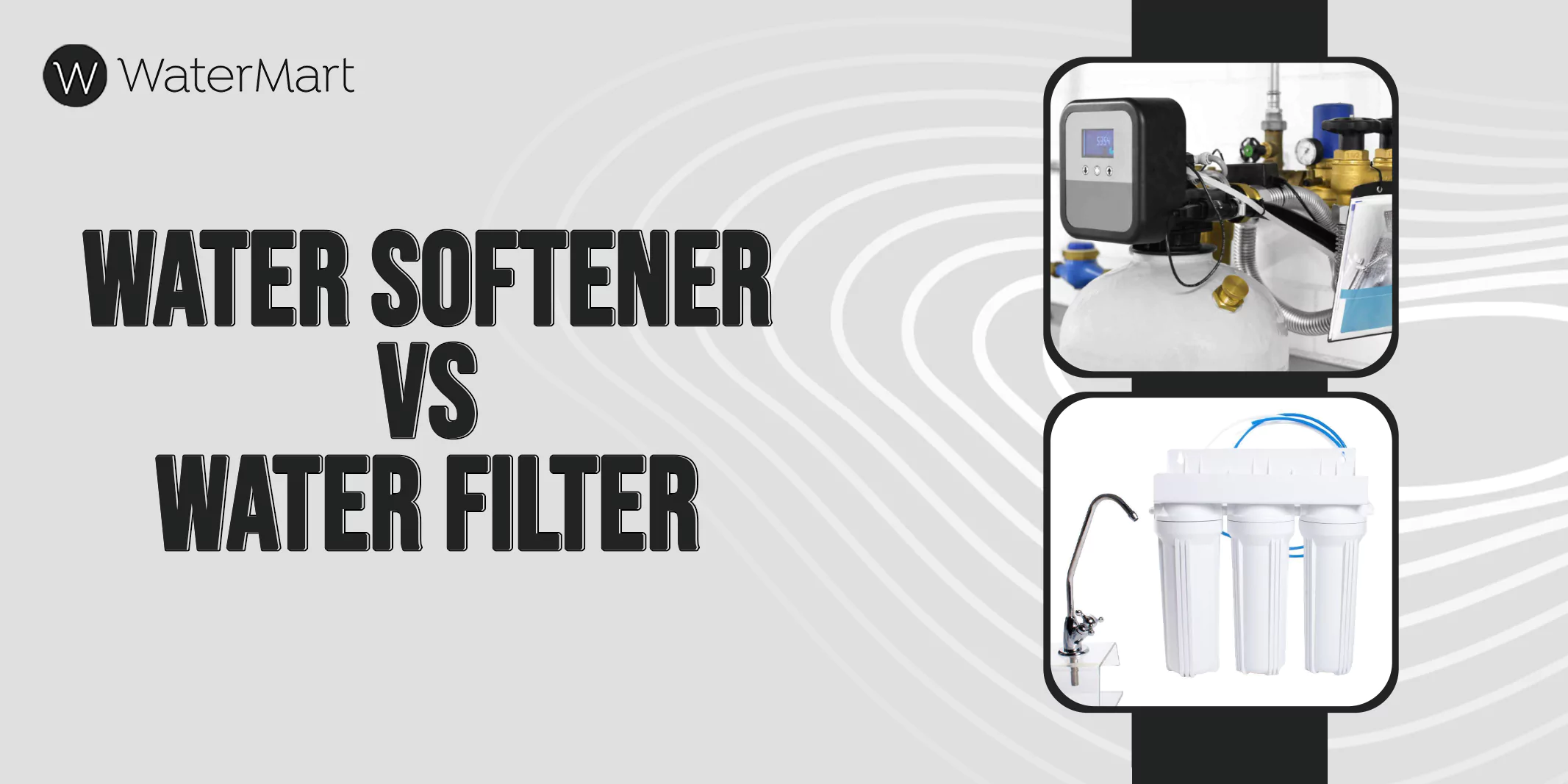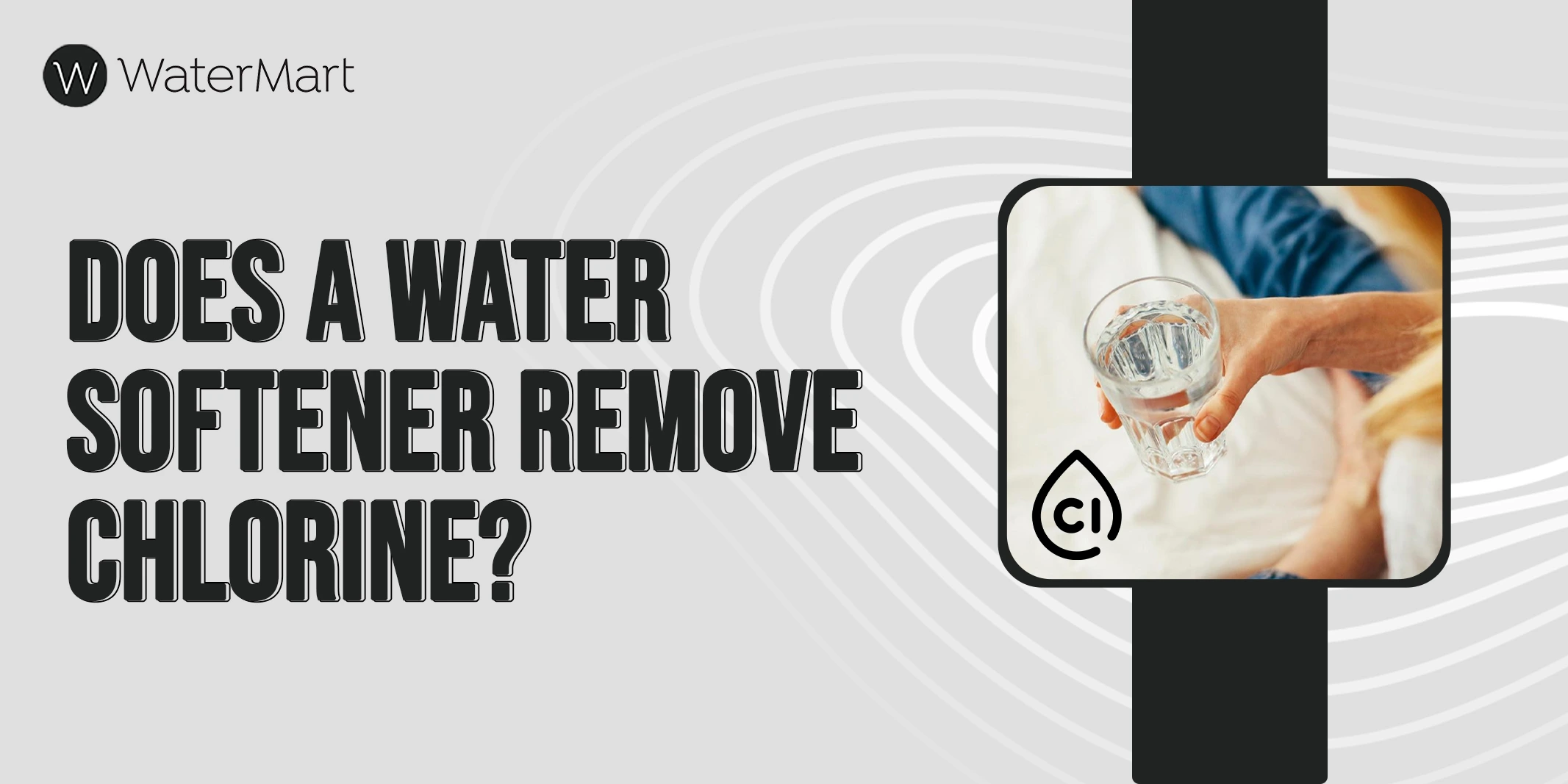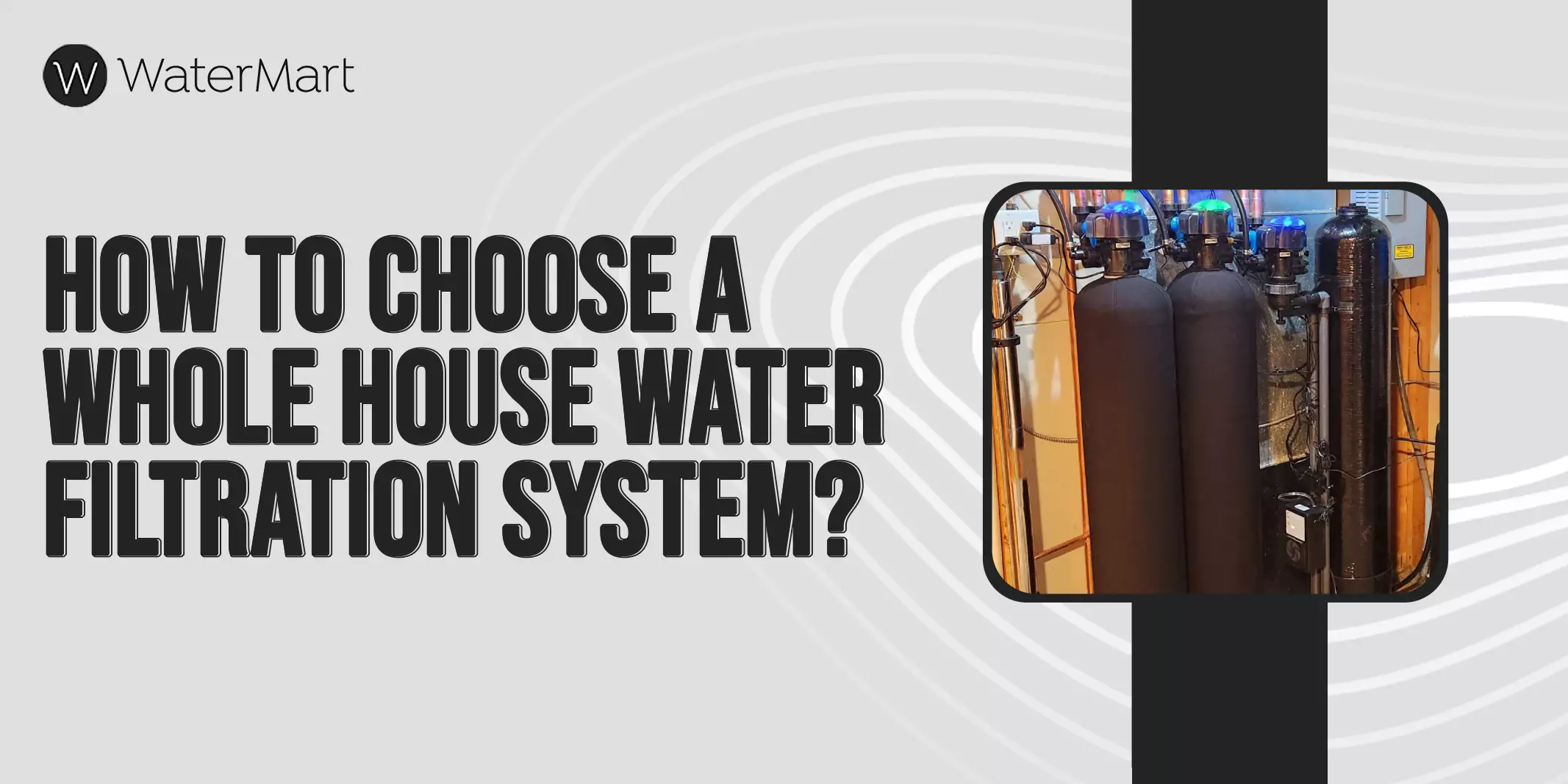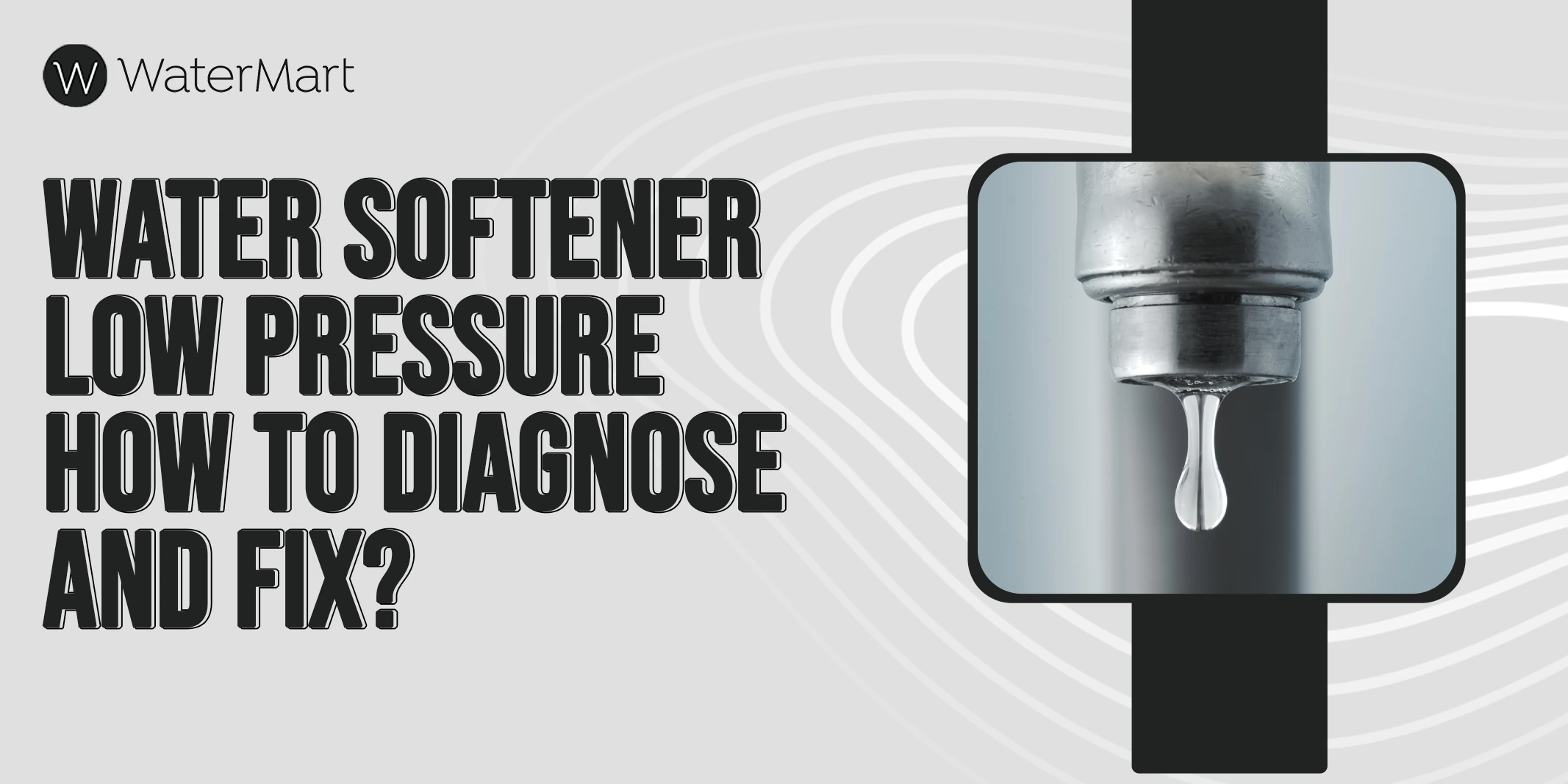Your cart is currently empty!
11 Common Water Softener Installation Problems
We understand the charm of DIY projects and how they all make you feel so creative while saving you money and providing a sense of accomplishment.
However, installing a water softener at home can lead to more frustration than fulfillment. Suppose you’ve brought your fancy new water softener home and DIY-ed it with the manual as your sole guide. You follow all the steps correctly, but still, the next morning, there’s a salty surprise—an overflowing brine tank.
In this article, we’ll discuss 11 common water softener installation problems and ways to prevent them.
Let’s go!
What Are Common Water Softener Installation Problems?
House water softeners are a true lifesaver for people living in hard water regions, but proper installation of the water softener is essential for its efficiency and performance.
Here are a few factors that contribute to improper water softener installation.
HINT: It’s not always the fault of your water softener installer.
Improper Water Softener Sizing
One of the few things we recommend considering before buying a new water softener is the size of your household. If you choose a water softener too small for your household, it will fail to remove hardness.
Similarly, if you choose a water softener too big for your household, it would be inefficient and wasteful. You should be very careful when choosing a water softener system.
Incorrect Placement
If you place your water softener in a compact place where there is little room for drainage, it will greatly impact its functionality.
Tip: Always keep your water softeners in an open space. If you live in a small apartment, it’s advisable to get wall-mounted ones that occupy little space.
Using Incorrect Pipe Sizes
Sometimes, the pipes of your water softening system are too small, and they restrict water flow and cannot handle the pressure of the system. As a result, they cause water softener installation problems and hinder the working of your softening system.
Connecting Pips Incorrectly
Check your pipes for leakage or improper connectivity to prevent water waste and avoid risking damage to your property.
Inadequate Drainage
Sometimes, the drainage issues will cause problems with draining the wastewater properly. As a result, your softener, despite being installed properly, won’t work.
Bypass Valve Issues
A bypass valve that is malfunctioning or installed incorrectly will prevent the softened water from reaching your faucets. As a result, you’ll get hard water in your faucets instead. A bypass valve that is malfunctioning or installed incorrectly will prevent the softened water from reaching your faucets. As a result, you’ll get hard water in your faucets instead.
Electrical Supply Problems
Make sure the electrical supply is proper and stable for your water softener to work efficiently.
Improperly Connected Brine Line
The regeneration cycle of a water softener is crucial for it to work efficiently. If you connect the brine line improperly, the salt will not be available for the regeneration cycle. Therefore, your water softener will not carry out the regeneration process like it should, making it ineffective.
Using the Wrong Type Of Salt
Every water softener comes with a recommended salt type in its user manual. Therefore, it’s always recommended to use the right type of salt for your softener. Using the wrong type will lead to system clogging and ineffective softening solutions.
Incorrect Programming
It’s advisable to program your water softener for optimal performance based on your water hardness levels. These programming methods vary according to the make and model of your water softener.
Find the hardness setting of your water softener and adjust it to match the level of your water hardness.
Note: If you don’t know your water hardness levels, schedule a FREE water test!
Incorrect Venting
The venting system is used for air intake and pressure relief. Therefore, improper venting may lead to some serious problems, such as reduced efficiency of your softening system, component damage, and other safety hazards. For instance, a ruptured tank.
Make sure to choose the correct venting requirements based on the model of your water softener and local plumbing codes.
The Disadvantages Of Incorrect Water Softener Installation
Water softeners are a blessing in disguise for people living in hard water regions, such as Canada. However, an incorrectly installed water softener can turn everything upside down.
Here are a few serious disadvantages of incorrect water softener installation.
System Malfunction
Incorrect water softener installation can lead to system malfunction in many ways.
- It can cause electrical issues with faulty wiring and improper grounding, damaging the internal components of your softener.
- It can cause water pressure problems either by hindering the regeneration process or preventing water from reaching the softener because of clogged pipes or leaking connections.
- Component damage is another factor that may cause malfunction and leaks
- Programming errors through incorrect settings and incomplete settings during the initial programming leave your water softener incapable of working properly
- Using the wrong components or the wrong salt type can lead to malfunction and hinder the softener’s ability to turn your hard water into soft.
Inefficient Water Softening
Inefficient water softening occurs when your water softener is running but not working properly to remove hardness. This may be due to leaky connections or incorrect settings of your softener.
Water Pressure Issues
Since water softeners are plumbed into your main line, incorrect installation may affect their performance and disrupt the overall water pressure in your home. It may lead to a restricted water flow to your faucets and showerheads. Also, it causes many internal issues, such as a clogged resin bed that restricts water flow within the softener.
Water Leaks
Improper water softener installation in the form of loose connections or improper bypass valve installation may result in water leaks and water waste that ultimately damage your property.
Salt Overuse Or Underuse
A water softener, when installed incorrectly, messes up your salt usage while initiating unnecessary regeneration cycles. And your water softener starts using extra salt. As a result, too much salt is wasted, which can also form salt bridges. Similarly, improper installation may leave the bypass valve open, reducing your salt usage but leaving you with hard water.
Increased Water Usage
An improperly installed water softener goes through inefficient regeneration cycles that lead to water waste, which is hazardous to our environment. Additionally, increased water usage adds up to your overall monthly expenses of water softener salt and utility bills.
Electrical Hazards
Faulty wiring and improper installation of water softener components can be hazardous to you and your loved ones and pose a safety risk.
Drainage Problems
The improper installation of a water softener can result in drainage problems and create unexpected clogging issues, ultimately preventing your softener from working effectively.
Voided Warranty
If you go for DIY water softener installation or choose a local plumber to install your water softener, most manufacturers void warranties.
Increased Maintenance Needs
The quick fixes and re-installation of an already poorly installed softener can be more complex, expensive, and time-consuming.
Potential Health Risks
Inaccurately installed water softeners lead to pressure imbalances, contaminating your water supply. This may cause potential health risks.
System Longevity
The lifespan of your water softener depends largely on its installation. An incorrectly installed water softener has a lower lifespan, leading to premature replacement and maintenance.
Incompatibility Issues (With Existing Plumbing System)
Incompatibility issues in your water softener installation lead to many problems, such as leaks and damages, system inefficiency, and other safety concerns.
Getting Rid of Water Softener Installation Problems
Now that you know that installing a water softener by yourself or your local plumber can turn into a frustrating nightmare, it’s crucial to understand the importance of professional water softener specialists.
Not only will a professional install your softening system correctly, but they will also guide you through the process and educate you with the tips and tricks to keep your water softener working efficiently for years to come, leaving you with pure, clean, soft drinking water.
Get In Touch with Expert Water Softener Installers
Hard water can be an unfortunate menace to your physical and mental health. Also, it plagues your home with stubborn soap scum, and mineral buildup that affect your everyday life.
People living in hard water regions, including Canada, will agree:
The most viable solution to hard water problems is installing a water softener by a professional company.
At WaterMart, we provide hassle-free water softener installation tailored to your needs and requirements. Our team of expert and licensed water softener installers tests your water for hardness levels and recommends the most suitable solution for your water needs based on your household size, hardness levels, and water consumption.
From detecting hard water to installing a perfect water softener and navigating the plumbing, we’ve got you all covered!
We provide:
✅ 100% Guaranteed leak-free installation of your water softener
✅ Proper configuration of your softener for optimal performance
✅ Complete peace of mind, backed up by a hassle-free warranty
When it comes to health, never settle for less, and contact WaterMart for all of your water needs.
Now You Know: Water Softener Installation Problems
Make the right choice by investing in a water softener. Make the best choice by hiring a professional to do the job.
While your local plumbers and DIY projects may save you a few bucks, they add to more frustration and headaches. Electronic appliances, as sensitive as a water softener, cannot handle a minor mishap during installation and may cause major problems later. For example, leaky connections and a completely dysfunctional softening system that does more harm than good.
Hiring WaterMart’s Water Filtration Experts is a smarter choice because:
- They are experienced and have the knowledge to ensure your water softener is installed correctly.
- They don’t just install the system but guide you through the complete process and recommend the right softener for you.
- They configure your softener for your water hardness levels and ensure you get maximum results.
The best of all? Many water-softening solution companies offer a hassle-free warranty that gives you complete peace of mind and comfort.
And the best part? Our water softener system comes with a hassle-free warranty, giving you total peace of mind. With our trusted water treatment services, you can be confident that your water will always be in great shape.
FAQS
Is it Easy to Install a Water Softener?
It depends on your level of expertise. However, for most people, it is not recommended to install a water softener by yourself.
What Happens if a Water Softener is Installed Backward?
If the water softener is installed backward, it can lead to many problems, such as resin bed damage, contaminated water, and ineffective brine solution.
Why is My Brand-New Water Softener not working?
There may be many reasons for your brand-new water softener to not work. Possible causes are leaks, valve malfunctions, ineffective regeneration cycle, and other internal damage. It’s recommended to call a professional to diagnose the problem.
What Are the Cons of Installing a Water Softener?
A water softener is not the best substitute for filtration systems as it doesn’t remove lead and heavy metals.
How Many Hours Does it Take to Install a Water Softener?
For a professional to install your water softening system correctly, it may take between two to four hours.
How Long Does it Take to See the Effects of a Water Softener?
You may notice effective results of a water softener in three to seven days.
How Hard is it to Install a Water Softener?
Water softener installation is a straightforward process. However, for most people, it can be very challenging to deal with the valves and the pipes. Therefore, it’s recommended to leave the water softener installation process to the professionals only.
